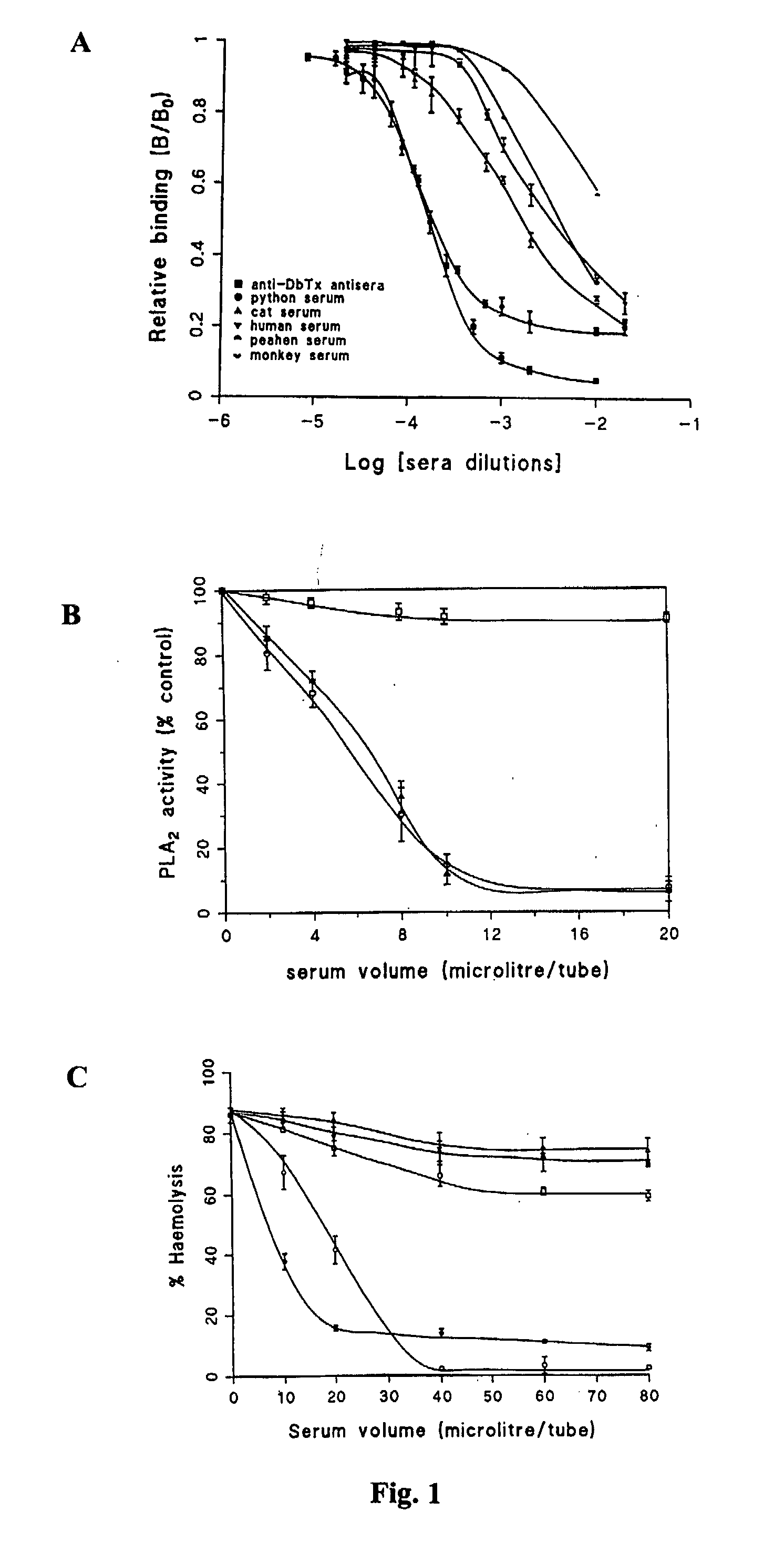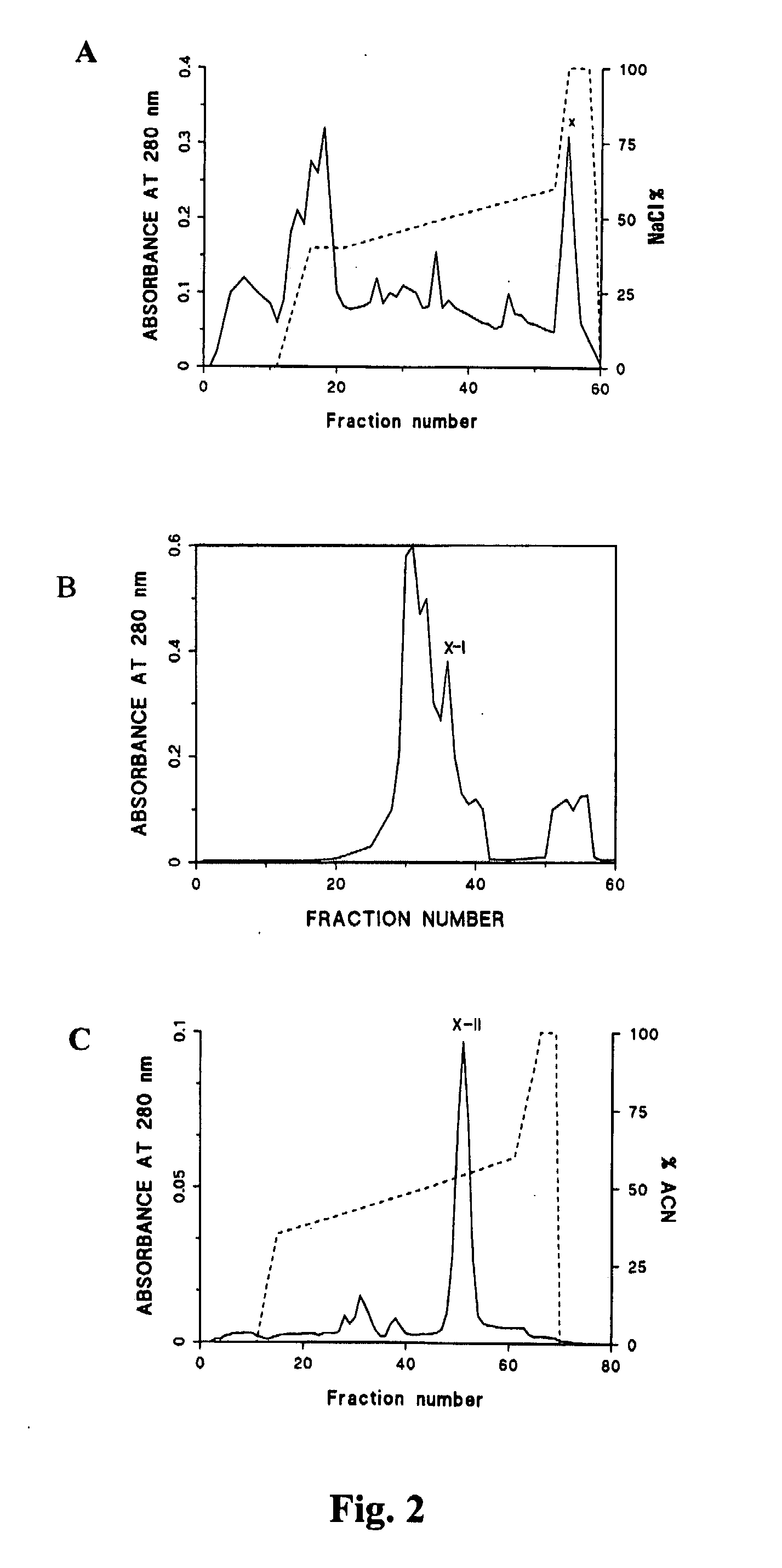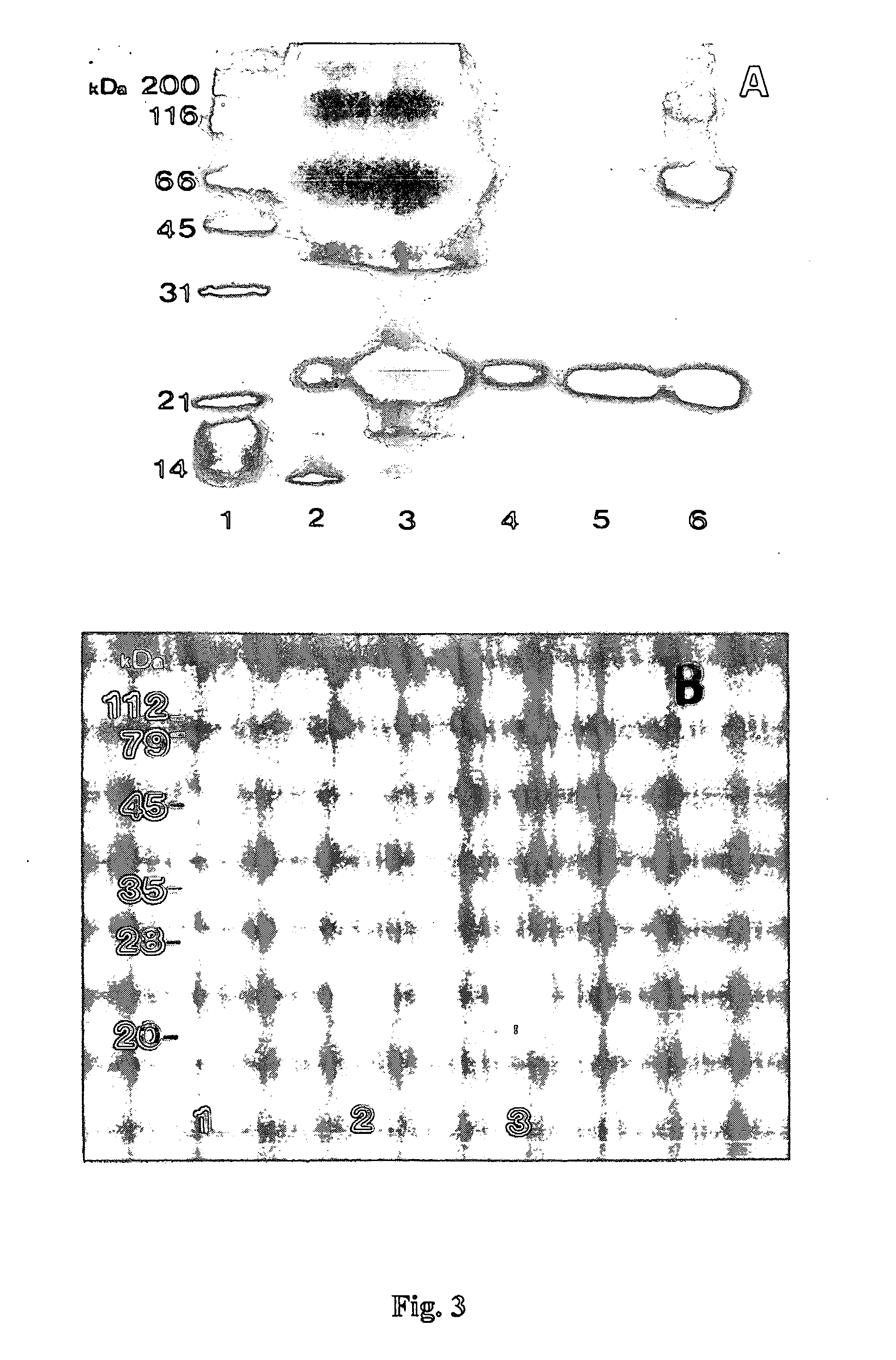Novel therapeutic and prophylactic agents and methods of using the same
a technology of anti-inflammatory agents and prophylactic agents, which is applied in the direction of depsipeptides, peptide/protein ingredients, chemical treatment enzyme inactivation, etc., can solve the problems of little effort to produce recombinant proteins that are functionally active as native inhibitors, use of antihaemorrhagic factors, and a major life-threatening health problem. , to achieve the effect of strong anti-inflammatory activity, treating or preventing pla2-related
- Summary
- Abstract
- Description
- Claims
- Application Information
AI Technical Summary
Benefits of technology
Problems solved by technology
Method used
Image
Examples
example 1
[0296] Neutralisation Properties of Sera Obtained from Python and Other Animals
[0297] Whole (unfractionated) sera of python and various animals were tested for their neutralising property against the lethality of Russell's viper (Daboia russelli siamensis) venom. The results of TABLE 1 clearly show that out of nine serum samples examined, python serum is the only specimen rendering protection against lethal doses of Russell's viper venom. 2 LD50 intraperitoneal dose of the venom and up to 5 LD50 intraperitoneal dose of the major lethal toxin (daboiatoxin) of Russell's viper venom can be effectively neutralised by as little as 40 μL (3 mg protein) of whole python serum. At higher doses (4LD50) of venom, 40 μL of python serum used in the experiment is inadequate to give full protection, indicating that a corresponding increase in the amount of python serum is required to achieve complete neutralisation when higher doses of venom are used (TABLE 1).
[0298] The neutralising action of w...
example 2
[0301] Purification of an Antitoxic Agent from P. reticulatus
[0302] A highly active therapeutic agent against lethal venom and toxin of a viperid, Russell's viper (Daboia russelli siamensis), has been purified from the serum of the nonvenomous snake python (Python reticulatus). For the purpose of the present invention, this agent has been designated Python Antitoxic Factor or PAF.
[0303] In summary, native PAF was purified as follows: (1) python serum was obtained; (2) the serum was detoxified by heating at 56° C. for 30 min; (3) the detoxified serum was fractionated; and (4) fractions comprising the neutralising activity for Russell's viper venom were identified and isolated.
[0304] In more detail, the fractionation step comprises obtaining an immunoglobulin-free fraction by 45-80% ammonium sulphate precipitation of the crude python serum and testing the in vitro PLA2 inhibition activity and the in vivo lethal venom neutralisation activity. In more detail, python serum was fractio...
example 3
[0311] Cloning and Expression of Recombinant Antitoxic Agent
[0312] In summary, cloning and expression of recombinant PAF was facilitated by: (1) isolating total RNA from the liver of Python reticulatus, amplifying a polynucleotide encoding PAF by RT-PCR, cloning the amplicon into a vector and sequencing the said polynucleotide; (2) amplifying the coding region for mature PAF by PCR, using primers designed from the sequence data, with restriction enzyme sites flanking the structural region of PAF; (3) cloning of the reconstructed recombinant DNA into the expression vector pQE30 in E. coli to produce a fusion protein with a hexahistidine tag; (4) inducing recombinant pQE30-PAF with IPTG; and (5) affinity purifying the recombinant PAF from lysed cells by imidazole elution from a Ni-chelate column.
[0313] In more detail, total RNA was isolated from the liver of Python reticulatus, by the guanidinium isothiocyanate extraction method (Ullrich et al. 1977; Science 196: 1313) and the integ...
PUM
| Property | Measurement | Unit |
|---|---|---|
| Therapeutic | aaaaa | aaaaa |
Abstract
Description
Claims
Application Information
 Login to View More
Login to View More - R&D
- Intellectual Property
- Life Sciences
- Materials
- Tech Scout
- Unparalleled Data Quality
- Higher Quality Content
- 60% Fewer Hallucinations
Browse by: Latest US Patents, China's latest patents, Technical Efficacy Thesaurus, Application Domain, Technology Topic, Popular Technical Reports.
© 2025 PatSnap. All rights reserved.Legal|Privacy policy|Modern Slavery Act Transparency Statement|Sitemap|About US| Contact US: help@patsnap.com



